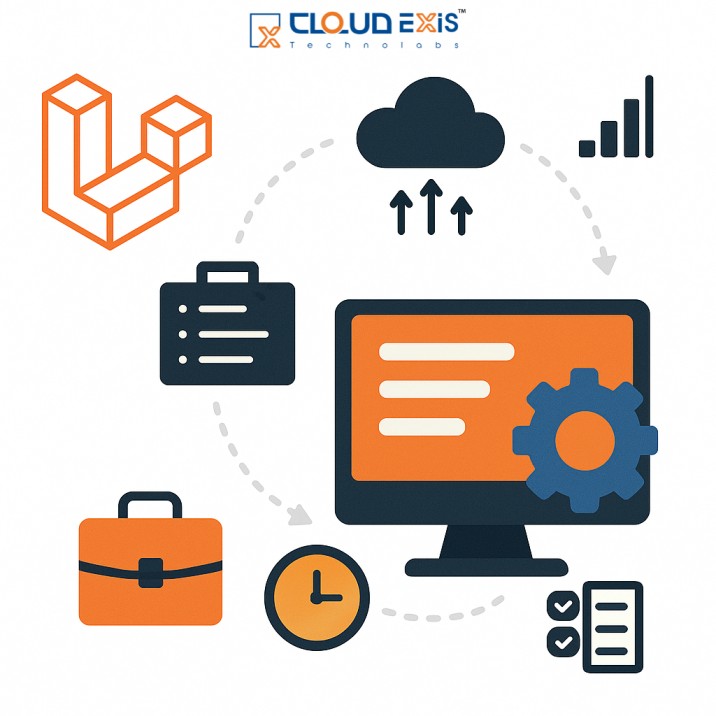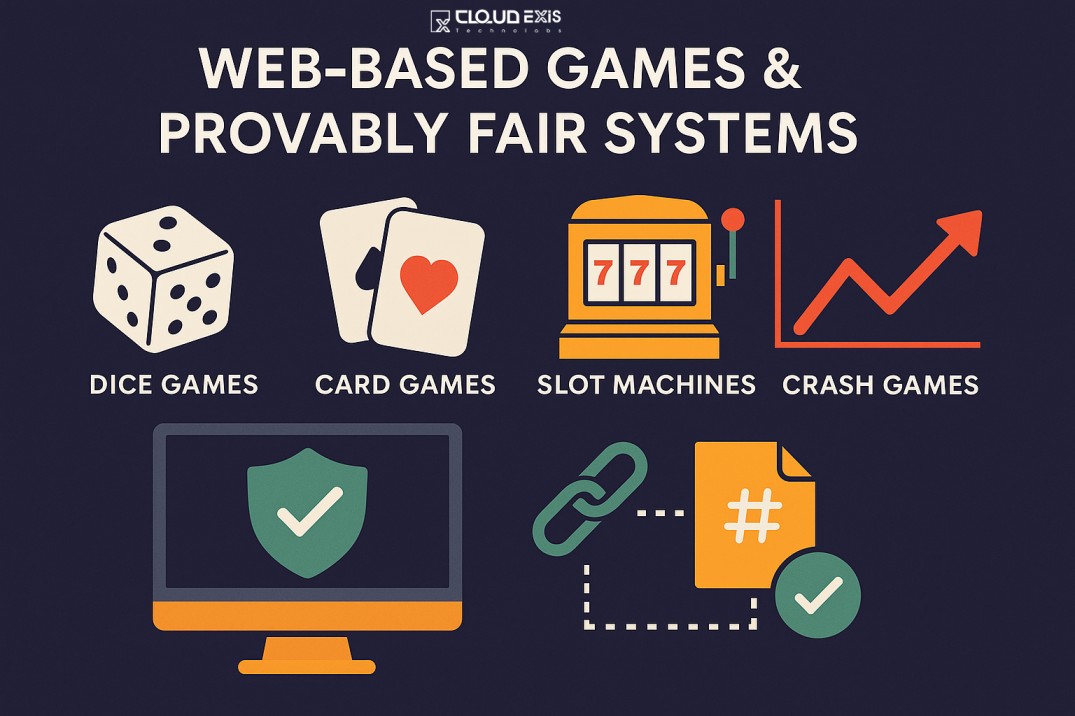In the world of enterprise software, scale isn’t just a nice-to-have. It’s a necessity. As businesses grow, their digital platforms face increasing demands: more users, heavier workloads, and greater complexity. To keep up, developers must ensure that applications stay responsive and performant under pressure.
For teams building with Laravel, one of the most powerful tools to achieve this scalability is its Queue and Job system. By handling heavy, time-consuming tasks asynchronously, Laravel Queues let your web layer remain fast while workers process background tasks efficiently.
In this comprehensive 2025 guide, we’ll explore how to design, implement, and optimize Laravel Queues and Jobs to build enterprise-grade systems that are robust, responsive, and ready to scale.
1. Why Queues & Jobs Are Essential for Enterprise Laravel Development
1.1. Faster Response Times
In traditional setups, every operation, such as sending emails, generating reports, or syncing data, runs during the request lifecycle. This blocks users and degrades experience.
Laravel Queues fix this by allowing you to offload these tasks to background workers. The main request completes instantly, while the job is processed asynchronously in the background.
1.2. Decoupling Components
Queues decouple systems. Your web controller doesn’t need to know how long a task takes or how it’s processed. It simply dispatches a job and moves on. This isolation improves reliability and makes code cleaner and easier to maintain.
1.3. Scalability and Load Distribution
As your system grows, Queues make it easy to scale horizontally. You can run multiple worker instances, distribute jobs across servers, and process thousands of tasks per minute without touching your main application servers.
1.4. Reliability and Fault Tolerance
Laravel provides automatic retries, delay handling, and failure management. If a worker crashes or a job fails due to a transient error, Laravel automatically reattempts it or moves it to a failed-jobs table for review.
In short, Queues transform Laravel from a synchronous web framework into an asynchronous, distributed processing platform, the foundation for modern enterprise systems.
2. Designing Robust Job Architecture
Simply dispatching jobs isn’t enough. For enterprise-grade reliability, your job system must follow best practices that handle concurrency, sequencing, error handling, and more.
2.1. Using the ShouldQueue Interface
Each job that should run asynchronously must implement the ShouldQueue interface. This tells Laravel to push the job to the queue rather than executing it immediately.
class ProcessReport implements ShouldQueue
{
use Dispatchable, InteractsWithQueue,
Queueable, SerializesModels;
public function handle()
{
// Heavy logic like PDF generation or data aggregation
}
}
2.2. Job Chaining
When tasks depend on one another say, generating a report, then emailing it, use job chaining to ensure sequential execution.
GenerateReport::withChain([
new EmailReport(),
new LogCompletion(),
])->dispatch();
This guarantees that the next job runs only if the previous one succeeds.
2.3. Job Batching
Batching allows you to process multiple jobs in parallel and receive callbacks once all jobs complete.
Bus::batch([
new ImportChunk(1),
new ImportChunk(2),
])->then(function () {
// All jobs completed successfully
})->dispatch();
Batching is perfect for data imports, analytics, or media processing, where large sets of similar jobs need to be processed together.
2.4. Multiple Queues and Prioritization
In enterprise apps, not all tasks are equal. You can assign jobs to different queues—high, default, low—and process them separately.
dispatch((new CriticalJob())->onQueue(‘high’));
dispatch((new RoutineJob())->onQueue(‘low’));
This ensures critical workflows like payments or authentication never get delayed by non-essential jobs.
2.5. Safe Retries and Idempotency
Jobs can fail due to network errors or timeouts. Ensure your jobs are idempotent, meaning rerunning them doesn’t cause duplicate effects (like double-charging a user).
2.6. Handling Failures Gracefully
Use the failed() method to define custom failure logic:
public function failed(Exception $exception)
{
// Log failure, alert admin, or perform rollback
}
In production, this helps you maintain visibility into job health and take corrective actions quickly.
2.7. Keeping Jobs Lightweight
Avoid bloated jobs. Instead of passing entire Eloquent models, pass lightweight IDs or DTOs. Jobs should do one thing well, and quickly.
3. Infrastructure & Scaling Strategies for Laravel Queues
3.1. Dedicated Worker Nodes
Always separate your web servers (handling HTTP requests) from your worker servers (processing background jobs). This prevents CPU-heavy background work from affecting live users.
3.2. Queue Backends
Laravel supports several backends for queues:
Redis: Fast, reliable, and ideal for most enterprises.
Amazon SQS: Great for distributed systems across regions.
RabbitMQ: Robust message broker for complex workflows.
Database: Simple but not ideal for high throughput.
For most modern enterprises, Redis is the go-to option due to its speed and simplicity.
3.3. Process Management with Supervisor
Use Supervisor (or systemd, Docker, PM2) to manage worker processes.
[program:laravel-worker]
process_name=%(program_name)s_%(process_num)02d
command=php /var/www/artisan queue:work redis –sleep=3 –tries=3
autostart=true
autorestart=true
numprocs=5
user=www-data
stdout_logfile=/var/www/logs/worker.log
This ensures workers automatically restart on failure and run continuously.
3.4. Autoscaling Workers
In enterprise systems, job volume fluctuates. Implement autoscaling based on:
Queue depth (number of pending jobs)
Average job delay
Worker CPU utilization
When queues grow long, add more workers dynamically. When idle, scale them down to save cost.
3.5. Horizon for Monitoring
Laravel Horizon provides a beautiful dashboard for Redis queues showing job throughput, wait times, failures, and more. It’s a must-have for enterprise monitoring and Laravel performance optimization.
3.6. Isolation by Queue Type
Assign heavy jobs (like video processing) to separate queues or even separate servers. This prevents them from blocking lighter, frequent jobs.
4. Performance Optimization & Tuning
4.1. Optimize Worker Configuration
Each worker process consumes memory and CPU. Adjust concurrency and process count based on your hardware limits. Use metrics to find the sweet spot between parallelism and stability.
4.2. Efficient Job Design
Split large jobs into smaller sub-jobs. Smaller jobs reduce lock time, improve fault tolerance, and allow for better parallel execution.
4.3. Use Cache and Chunking
When dealing with large datasets:
Use
chunk()orcursor()for memory-efficient queries.Cache repetitive data with Redis or Memcached.
User::chunk(100, function ($users) {
foreach ($users as $user) {
ProcessUser::dispatch($user->id);
}
});
4.4. Optimize Database Queries
Jobs that hit the database heavily must use indexes, eager loading, and optimized queries. Avoid N+1 problems by properly structuring relationships.
4.5. Enable PHP Opcache
Opcache reduces the overhead of loading and compiling PHP scripts, giving a noticeable performance boost in high-throughput queue environments.
4.6. Manage Long-Running Jobs
For very long jobs (e.g., video encoding, report generation):
Use job batching.
Periodically update progress.
Break them into resumable checkpoints.
4.7. Clean Failed and Stuck Jobs
Set up periodic cleanups to remove old failed jobs or requeue them. Stuck jobs can block queue throughput and distort performance metrics.
4.8. Use Rate Limiting
When calling external APIs, rate-limit your jobs to prevent hitting third-party limits. Laravel’s RateLimiter and throttling tools make this easy.
5. Real-World Challenges and Solutions
5.1. Cold Start Delays
If your system scales down workers to zero during idle periods, the first few jobs may face latency (cold start). Mitigate this with warm-up scripts or a minimum worker count.
5.2. Memory Leaks
PHP workers can accumulate memory over time. Use Supervisor’s --max-jobs flag to restart workers after processing a fixed number of jobs.
5.3. Low-Priority Job Starvation
If “high” queues are always busy, “low” queues may starve. Configure worker priorities carefully, or allocate dedicated workers for each queue type.
5.4. Transaction Safety
Always dispatch jobs after committing database transactions. Otherwise, jobs might run on uncommitted or rolled-back data. Use:
dispatch(new Job())->afterCommit();
5.5. Handling External Failures
When jobs rely on APIs or external services, wrap calls with retries, exponential backoff, and circuit breakers to prevent cascading failures.
5.6. Monitoring and Alerting
Set up alerts for:
Queue length spikes
High failure counts
Worker crashes or delays
This ensures early detection of bottlenecks before they affect end users.
6. Advanced Tips for Enterprise-Grade Optimization
6.1. Distributed Workflows
In microservice environments, Queues act as the communication backbone. Use structured message formats (like JSON or Protobuf) and consistent schemas for interoperability between services.
6.2. Feature Flags
When introducing new jobs, roll them out gradually behind feature flags. This lets you test new workflows safely in production.
6.3. Event-Driven Architecture
Combine Laravel Events with Queues to build reactive systems. Example:
OrderPlaced→SendInvoiceJob→NotifyWarehouseJob→UpdateAnalyticsJob.
6.4. Horizontal Sharding
For extreme scale, split jobs by type, region, or customer group. Run dedicated worker pools for each shard to reduce contention.
6.5. CI/CD Integration
Integrate job deployment and monitoring into your CI/CD pipeline. Automatically restart workers and clear old queues post-deploy to ensure fresh configurations.
7. Checklist for Scaling Laravel Queues in 2025
| Step | Key Action |
|---|---|
| 1 | Use ShouldQueue and dispatch jobs properly |
| 2 | Design idempotent, lightweight, and retry-safe jobs |
| 3 | Separate web and worker servers |
| 4 | Choose Redis or SQS for production |
| 5 | Set up Supervisor and process monitoring |
| 6 | Enable Horizon dashboard and alerts |
| 7 | Implement autoscaling policies |
| 8 | Continuously profile and optimize queries |
| 9 | Handle failures gracefully |
| 10 | Clean up failed and stale jobs regularly |
Conclusion
As we move deeper into 2025, enterprises demand scalable, resilient, and high-performing Laravel architectures. By embracing Queues and Jobs, you can unlock asynchronous processing, parallel workflows, and smooth user experiences even under massive load.
The beauty of Laravel lies in its simplicity and flexibility. When combined with disciplined architecture, smart scaling, and continuous optimization, it becomes a truly enterprise-grade framework capable of powering complex systems efficiently.
Whether you’re processing millions of records, handling live notifications, or orchestrating AI-driven workflows, Laravel Queues are your key to scaling confidently and delivering consistent performance at every level. Contact Us






